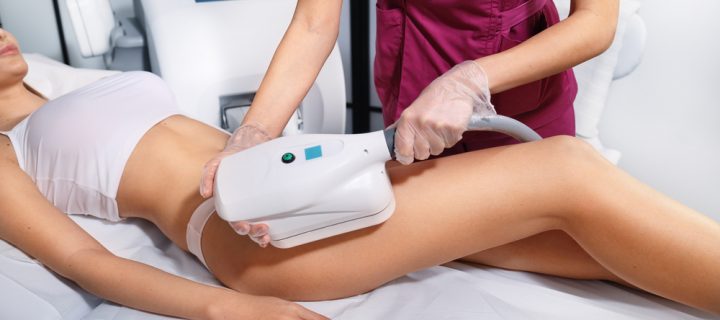Research has shown the procedure does work but it doesn’t necessarily help you lose weight.
There are many approaches to changing your shape. You can cut back on sugar, avoid eating deep fried foods and overly processed junk, and maybe jog around the block a few more times. Some people even turn to fad diets and medication to shed extra pounds. But what about fat freezing? Does it work? The term sounds a bit like some made-up technique mentioned in the latest teen drama but some people swear by it. Here’s what it is and the science behind it.
What is fat freezing?
Fat freezing is a non-surgical approach to body reshaping that applies cold temperatures to your fat. The fat cells you wish to get rid of are targeted, causing them to die out via apoptosis. Invented by Dieter Manstein, a doctor from Massachusetts General Hospital and Harvard Medical School, back in 2009, this procedure is intended for use on fat deposits an individual wants gone but that don’t seem to disappear with either dieting or exercising.
Patented as ‘CoolSculpting”, fat freezing is also called cryolipolysis. It’s been approved for use by the the Food and Drug Administration on many areas of the body. This includes beneath your chin, on the upper arms, on your inner and outer thighs, on your abdomen, on the upper back and lower back areas, and underneath your bum.
Related: 6 Best Foods to Help Lower Your Cholesterol Even Further
How does fat freezing work?
Fat freezing works because your fat cells can be damaged by cold temperatures. It’s that simple. Once damaged, this event triggers an inflammatory response throughout your body. This sudden response kills the injured fat cells, and your body then sends a form of white blood cells to the location of “injury” and rids your body of the dead cells. The procedure has been proven to reduce fat in targeted areas from between 15 to 28 percent over about four months of treatment. The most significant improvements are seen after about two months.
Are there any side effects?
According to the Cleveland clinic and the stories of real life people, some side effects from fat freezing can pop up. And sometimes they are the stuff of nightmares. In rare cases, the fat that is targeted with the hopes of making it disappear actually does the opposite. It increases in size. This side effect is called paradoxical adipose hyperplasia. Research has shown this happens more often to men and people from a Hispanic background. The former supermodel Linda Evangelista has been a victim of this.
Some people also experience bruising and disfiguring of the skin in the area they targeted after fat freezing.
Finally, scientists say it’s also possible for you to gain weight following the procedure and that fat can be deposited in other areas of your body. Remember, nature is all about balance!
All this being said, for some individuals, fat freezing is something to be celebrated. It can help you feel better about yourself and bring about new confidence.
It’s important to note that fat freezing isn’t recommended as a weight loss treatment for people who are severely overweight or obese.
To learn more about fat freezing, click here.
photo credits: dpVUE .images/Shutterstock.com










